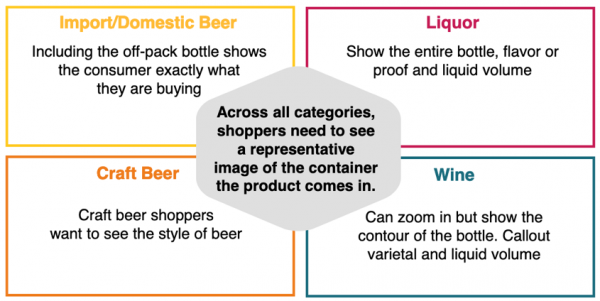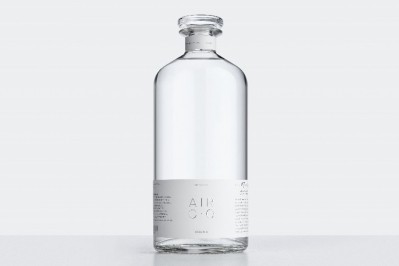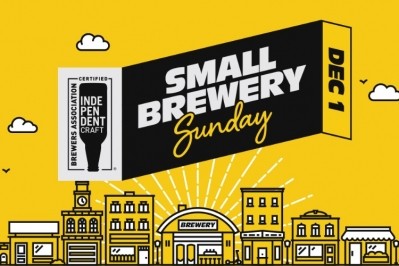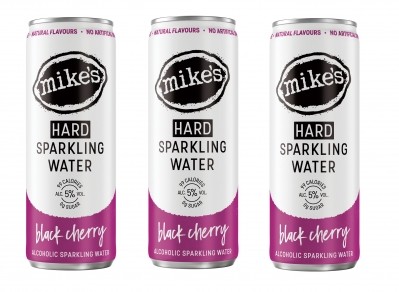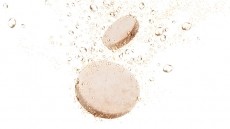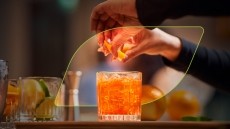Optimizing alcohol for ecommerce: ‘How easy do you make it for people?’

Ecommerce is already ingrained in western consumer culture, but alcohol has been a notable late arrival to the online shopping world. Differing state and city regulations for alcohol sales and distribution remain the industry’s biggest obstacle in the US.
But it’s slowly starting to break through. Snacks and grocery delivery mobile apps like GoPuff and Instacart advertise their ability to deliver alcohol, while direct orders or click-and-collect programs at major retailers like Walmart and Target are still a bit confusing when it comes to booze.
Global insights agency SKIM recently conducted a consumer behavior study for online alcohol shopping on behalf of a client that produces and markets beer, wine and spirits. Participants completed two virtual shopping trips in an Amazon Prime Now replicated mobile environment.
The aim was to learn how to help retailers do a better job of managing the online presence; and build a presence in the alcohol category that makes shopping simpler from home or on-the-go.
Clear copy, descriptive images
The study tested findability and clickability among craft beer, import beer, wine and vodka. It was determined that in craft beer, consumers wanted to see the style (IPA vs stout), while for imports and domestic it was more important to include pack size.
Even cleaning up the digital assets is a major help, and ensuring that retailers aren’t displaying the wrong image or description for a product, according to marketing researcher Mike Mabey and senior analyst Liz Kadrich from SKIM.
Mabey told BeverageDaily that he advises clients that images are one of the most important elements of digital content optimization, as ecommerce is a highly visual experience. Each SKU should include at least a primary and secondary image that are compatible with mobile viewing.
A thorough product detail page, accompanied by copy, description and related videos are also crucial for the customer shopping experience. Pop-ups and banner ads tend to have a negative effect on consumers, but still present the possibility of triggering an impulse purchase, SKIM said.
Price and pricing format should be clear, as well as packaging size and any coupons or promotions. The option to bundle products could also incentivize consumers to purchase something different, disrupting their normal buying habits.
Mass selection confusion
The mobile-friendly concept has turned into mobile-first, SKIM said. Because smartphones are so common and convenient, 74% of online alcohol purchases are now made on mobile. Beyond imagery, Mabey said searchability is another significant obstacle in the industry.
Good, clear images and straightforward product titles assist customers in finding their desired product, but there’s still room for improvement. The sheer volume of alcohol SKUs that are able to be listed online are now creating a task for shoppers to weed out their favorites.
“When shoppers can’t locate the right item, retailers lose sales. According to one international producer and marketer of beer, wine and spirits, 1/3 of online alcohol shoppers said they couldn’t find the right item, brand or pack size they wanted and therefore purchased less than expected,” SKIM said.
People browse, but then leave apps and websites without buying what they were planning to at increasingly high levels, Mabey said. If they visited a brick-and-mortar store the alcohol selection would be much smaller and they would have to choose from it. But digital houses a massive selection which complicates the experience.
“It’s just a matter of how do you search? And how easy do you make it for people to search for what they want? That is where there’s a big problem,” Mabey said.
A hands-on approach from big brands
SKIM cited a recent study that found 68% of all US consumers began their ecommerce searches with Amazon. They may not end up purchasing from Amazon, but it’s become a home base to find product information, compare prices and read peer reviews.
Shoppers are familiar with the Amazon model, but they have a lot of requirements when it comes to ecommerce. SKIM develops regulations and guidelines for alcohol clients for what the products should look like online, what should go into an image, what’s essential online and what’s overlooked from products on the shelf.
“For example, when designing online product images for wine, marketers may not know if the image itself should be cropped to show details that wine shoppers find compelling, such as the shape of the bottle, the design of the label and whether it has a cork or screw top,” SKIM said.
Large companies should never rely on retailers to make these decisions, Mabey said. They need to take a hands-on approach and incorporate digital guidelines into their own work, like packaging or signage.
“It’s their brand and they need to manage and control how their images are appearing online. If they don’t manage it, and they let someone else manage it for them, that’s not going to end well,” Mabey said.
